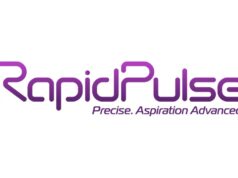 A recent addition to Europe’s flow diversion market—the Derivo 2 embolisation device (DED2; Acandis)—has demonstrated promise in a small-scale, multicentre study, providing a safe and effective treatment for both ruptured and unruptured intracranial aneurysms.
A recent addition to Europe’s flow diversion market—the Derivo 2 embolisation device (DED2; Acandis)—has demonstrated promise in a small-scale, multicentre study, providing a safe and effective treatment for both ruptured and unruptured intracranial aneurysms.
Writing in Interventional Neuroradiology, study authors Maximilian Thormann (University Hospital Magdeburg, Magdeburg, Germany) et al state that, in addition to demonstrating a safety and efficiency profile that is comparable to other flow diverters, the novel DED2 device showed a high rate of satisfactory aneurysm occlusion, and low rates of permanent major morbidity, at six months of follow-up.
At the outset, the authors describe DED2 as a self-expanding device consisting of up to 64 nitinol wires that promises to provide better X-ray visibility, as well as a more homogeneous distribution of radial force and porosity. They also report that—while a good safety and efficiency profile has been associated with the Derivo 1 device in the current literature— there are “no clinical angiographic data on the technologically improved DED2” to date.
As such, Thormann and colleagues performed a multicentre trial across six interventional centres, using prospectively collected data and including all patients treated with the DED2 device. Their primary endpoint was angiographic aneurysm occlusion at six months, as assessed by the O’Kelly Marotta (OKM) grading scale (favourable outcome definition=OKM C [entry remnant] or D [no filling]). Clinical outcomes were evaluated according to the modified Rankin scale (mRS), with favourable outcomes being defined as mRS 0–2, and major morbidity as mRS 3–5 or a deterioration by two points.
In the study, treatment decisions—including systemic heparinisation, and the additional use of coils or balloon angioplasty—were made at the discretion of the treating interventionist, but also confirmed by a neurovascular board. All procedures were performed under general anaesthesia by a board-certified neuroradiologist, the authors add.
Between August 2020 and July 2021, 37 patients (median age=60 years, 27 females) were treated with DED2 and subsequently included in Thormann et al’s analysis, five of whom presented with ruptured aneurysms and 20 of whom presented asymptomatic. The DED2 was successfully implanted and fully opened at deployment in all cases and—immediately after deployment—21 patients (57%) had an OKM grade of C or above.
Clinical and angiographic follow-up data were available for 30 patients (81%) and 27 patients (73%), respectively, and the median follow-up time was six months. Twenty-five patients (83%) had an mRS of 0–1. In addition, six of the seven patients with missing mRS data at follow-up had an mRS of 0 at discharge.
Three patients died during the follow-up period—all of whom had ruptured aneurysms initially. Further, no deaths were observed in patients with unruptured aneurysms; no treatment-related major morbidity was observed; and, on follow-up imaging—which was available in 27 patients (90%)—23 patients (85%) showed satisfactory aneurysm occlusion (OKM C or D).
Discussing their findings further, Thormann and colleagues note that the intracranial haemorrhage rate in their study (3%) is comparable with previously published results on the Derivo 1 device, while the rate of in-stent thrombosis in their cohort “did not differ significantly” from rates currently seen in the literature either. They also reiterate that, although the overall mortality seen in their study is “high compared to other studies”, all of the observed deaths occurred in patients with ruptured aneurysm patients, adding that they “intentionally decided to include cases with ruptured aneurysms to demonstrate the usability of the device in both ruptured and unruptured aneurysms”.
“Given our small sample size, the mortality rate within the ruptured aneurysm subgroup may not necessarily be attributed to the device or treatment with flow diverters in general, but rather mirror the severity of specific patient cases,” the authors continue. “While comparisons across studies and devices are difficult due to different inclusion criteria and technical setups, our efficacy and safety results are within the range published for competing flow diverters, and the Derivo 1.”
Thormann et al also go on to note some improved outcomes in their study compared to a prior trial involving Derivo 1—including lower rates of failure to open, displacement, and use of adjunctive coiling—but concede that “our data do not allow us to determine whether this is due to the improved design of the DED2”.
Limitations highlighted by the authors in the report include the retrospective nature and small sample size of the analysis, as well as the “relatively short” six-month follow-up period, and the fact patient selection, antiplatelet therapy choices and angiographic outcome assessments were all at the interventionists’ discretion.













